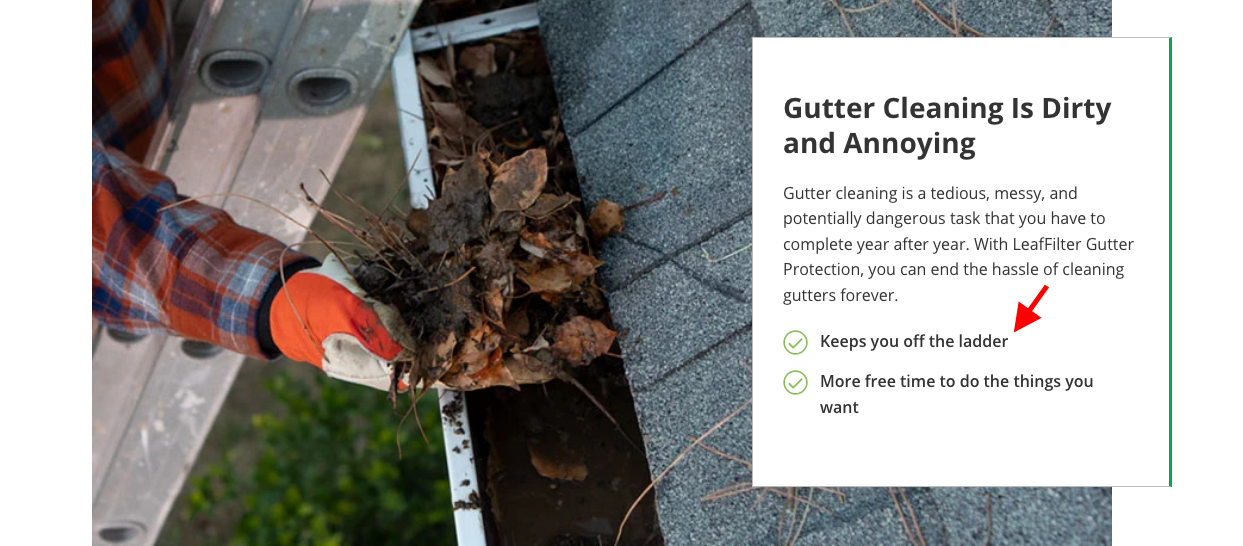
LeafFilter Gutter Guard: ‘Keeps You Off the Ladder’
Gutter cleaning is dirty and annoying. So is deceptive marketing.
You might think that 80 times the aroma of a particular plant, even a pleasant-smelling one, would overwhelm the senses. But no one’s wincing or dry heaving (thankfully) in the above TV commercial for Air Wick’s essential oils, specifically its lavender scent, which the company claims is “infused with over 80 lavender flowers” per bottle. In fact, two of the three subjects in the ad appear pleasantly surprised when they find out that what they thought was real lavender was actually Air Wick’s product.
But how is this scent really achieved?
A TINA.org reader wrote in:
It is very unlikely that there is any real lavender in this product, as they have supposed customers choose between its scent and “real lavender.” Even if it did contain real lavender, it is highly doubtful that they would be counting the number of flowers in every bottle.
TINA.org asked Air Wick how it arrived at over 80 lavender flowers per bottle. We have yet to get a response.
But what we found when we looked up a lavender-scented essential oil on Air Wick’s website is that the first ingredient in the product (and thus the most predominant) is not “over 80 lavender flowers” but fragrance. The Environmental Working Group, a nonprofit that examines ingredients in consumer goods, has referred to the ingredient fragrance as “a black box for hundreds of chemicals in thousands of everyday products.” This is because fragrance is one of two ingredients on a product label that itself can be comprised of hundreds of natural and synthetic ingredients. The other is “flavor.” Under U.S. regulations, companies are allowed to simply list “fragrance” or “flavor” to protect trade secrets.
But we did some digging and, according to a “safety data sheet” for the lavender-scented essential oil, here’s some of what appears to go into Air Wick’s fragrance formula (in descending order of predominance):
Perhaps not what you would expect from a product advertised in the commercial as “infused with 100% natural essential oils.”
Essential oils are appealing to consumers because the source is natural. However, the FDA warns:
Sometimes people think that if an “essential oil” or other ingredient comes from a plant, it must be safe. But many plants contain materials that are toxic, irritating, or likely to cause allergic reactions when applied to the skin.
Find more of our coverage on essential oils, which are prevalent in the Multilevel Marketing – a way of distributing products or services in which the distributors earn income from their own retail sales and from retail sales made by their direct and indirect recruits. industry, here.
Gutter cleaning is dirty and annoying. So is deceptive marketing.
Are there really any benefits to drinking alkaline water?
It’s safe to say this ad makes some misleading claims.

